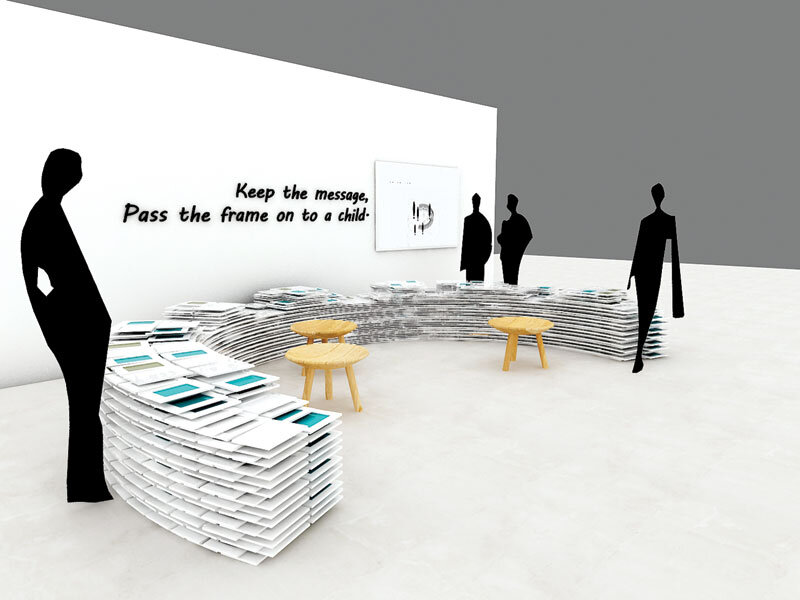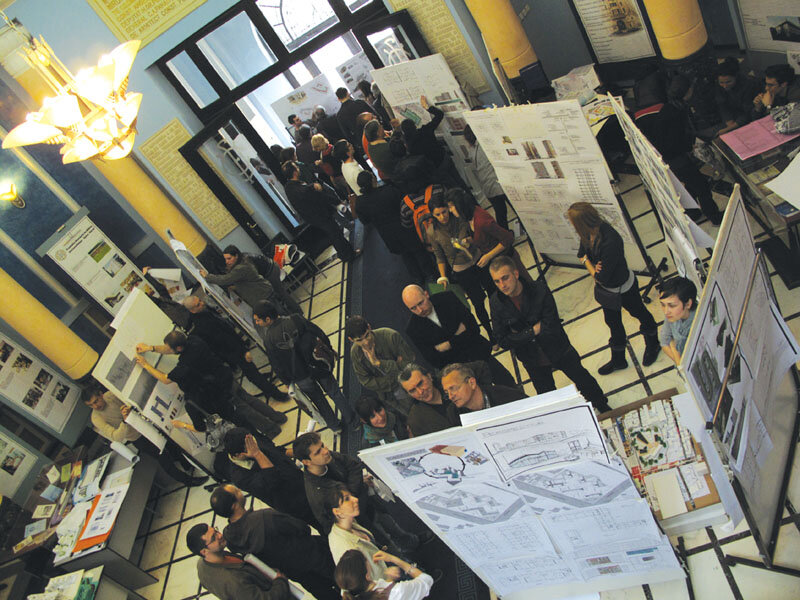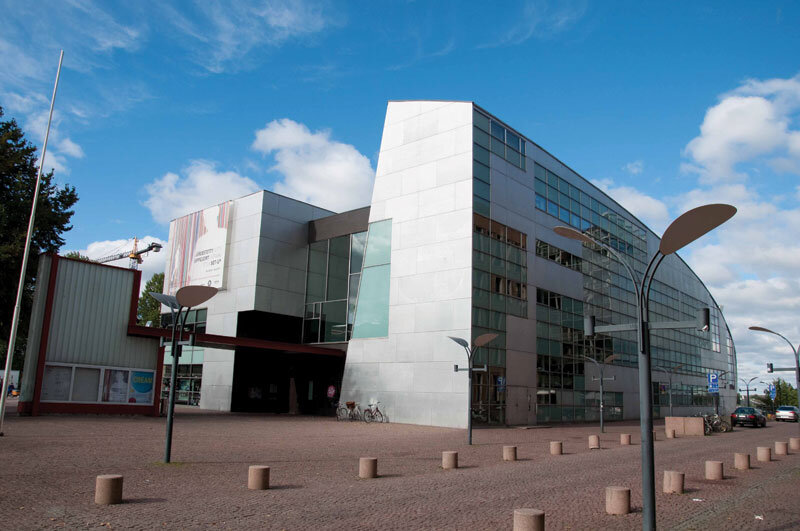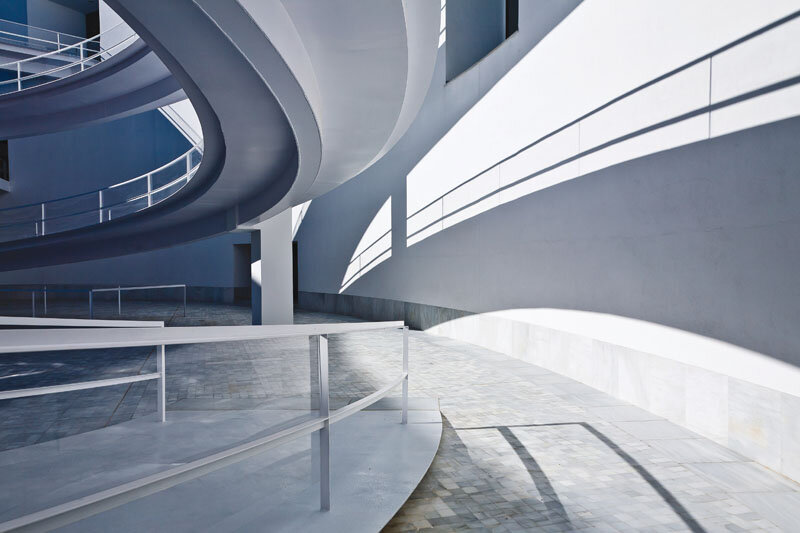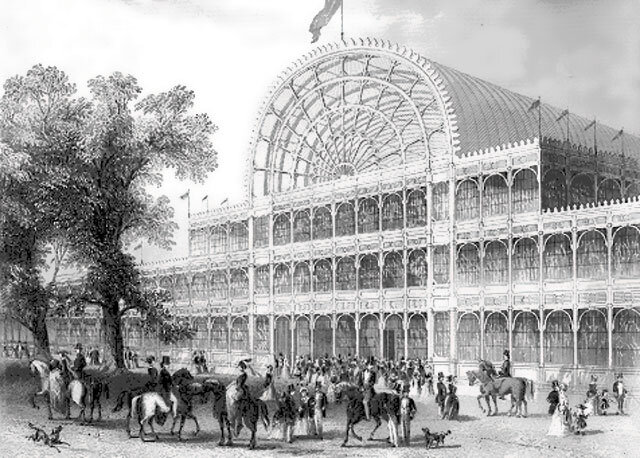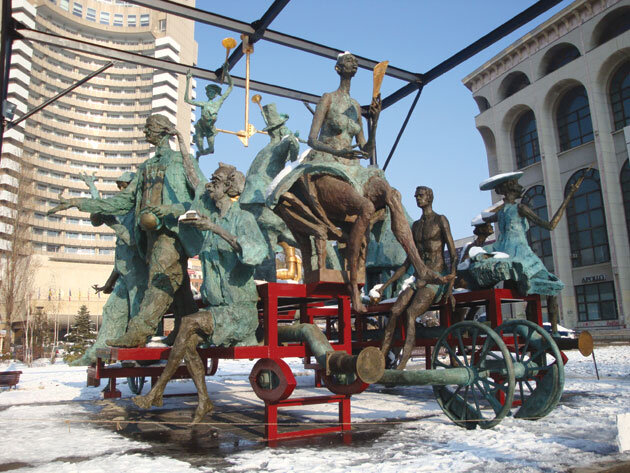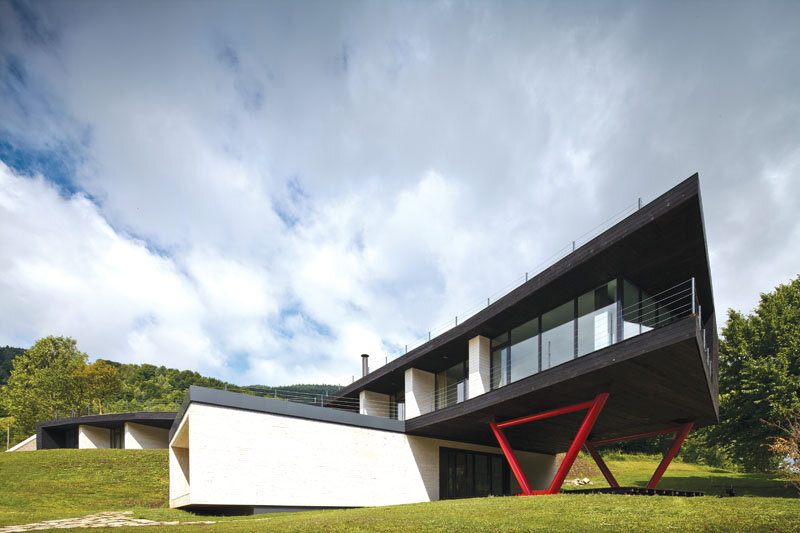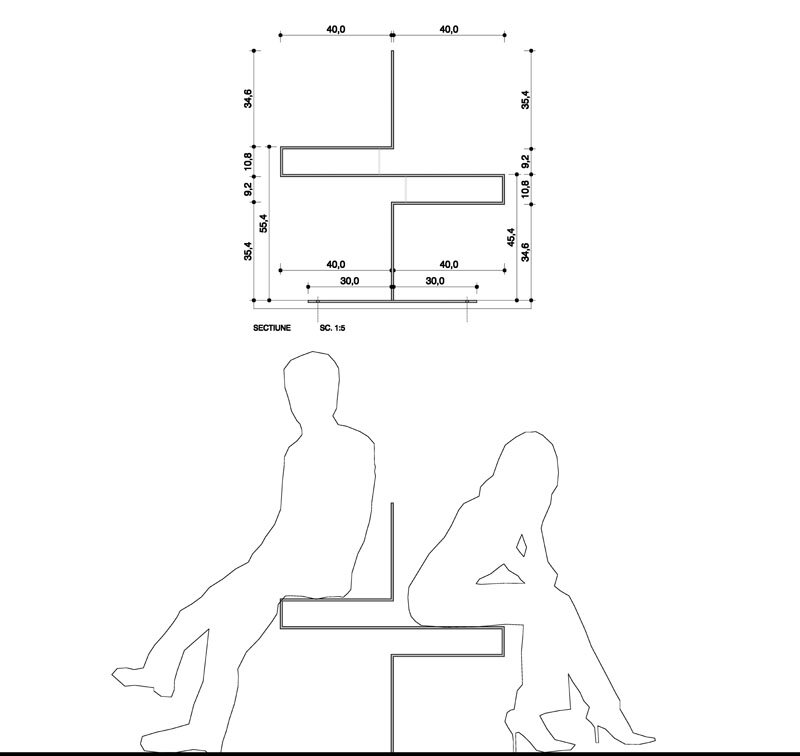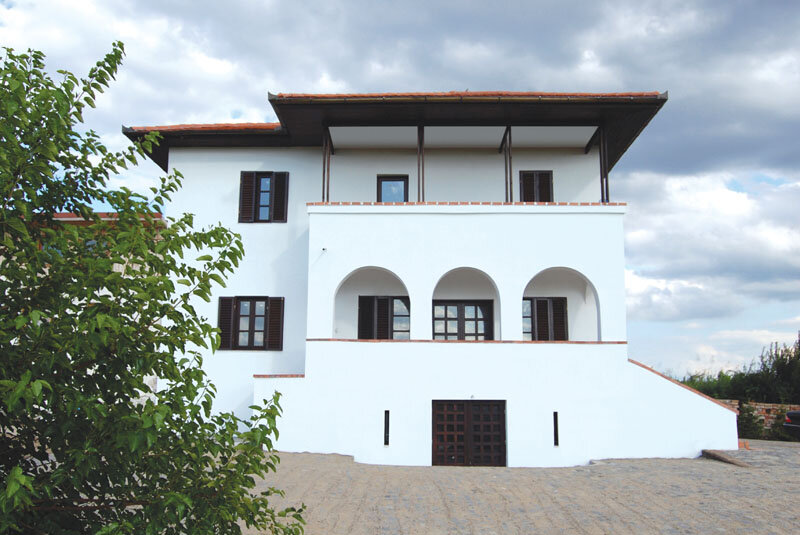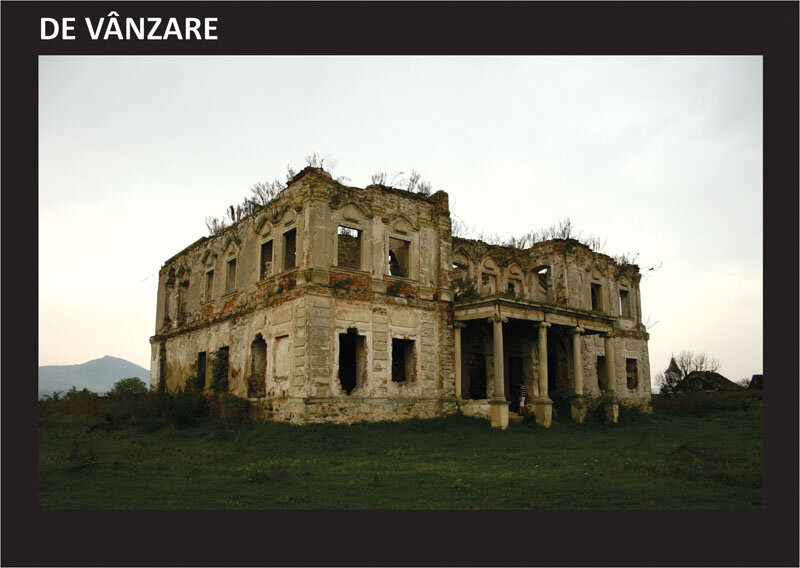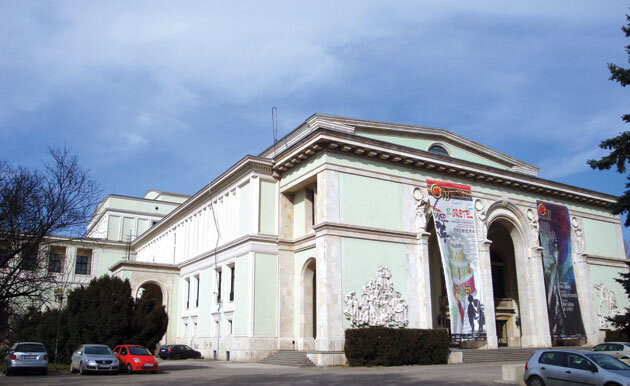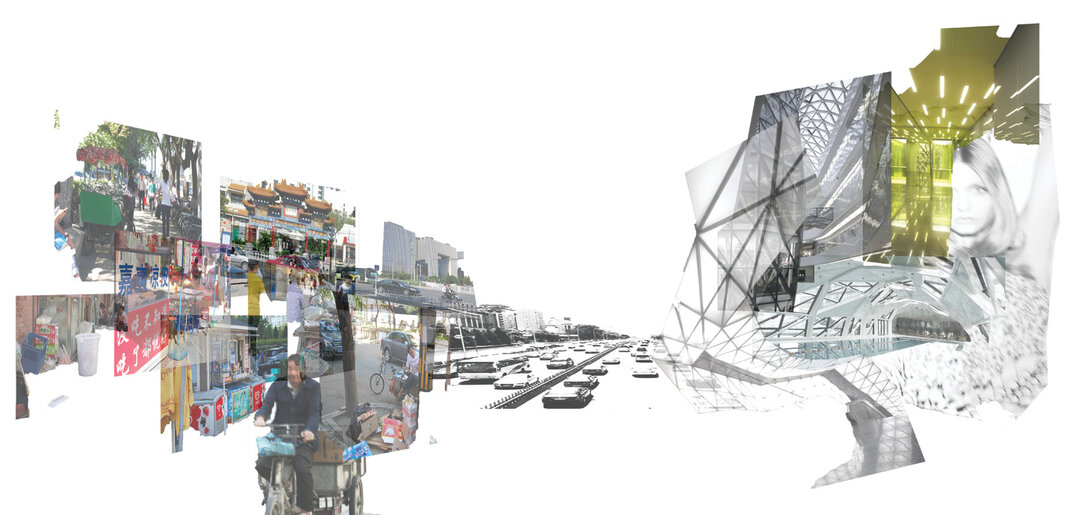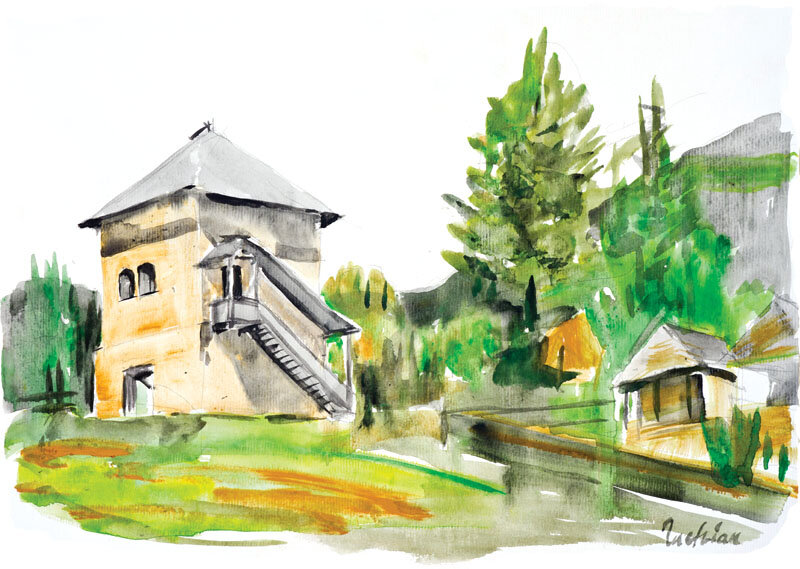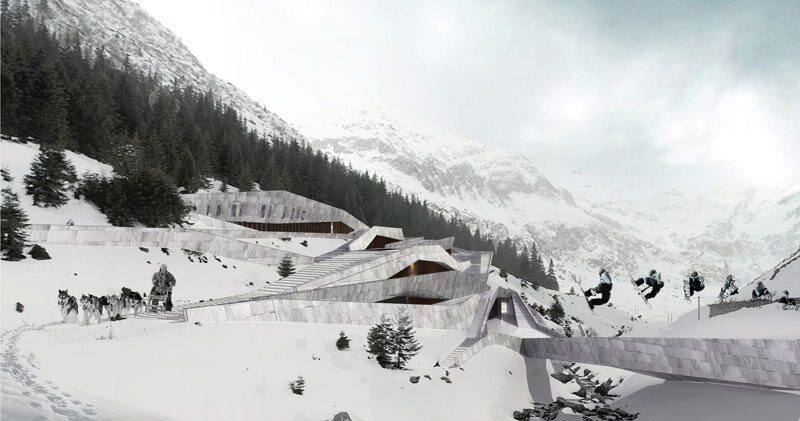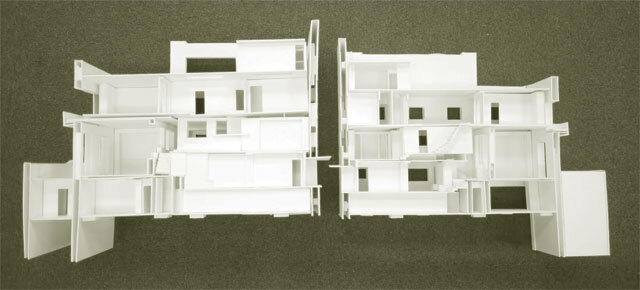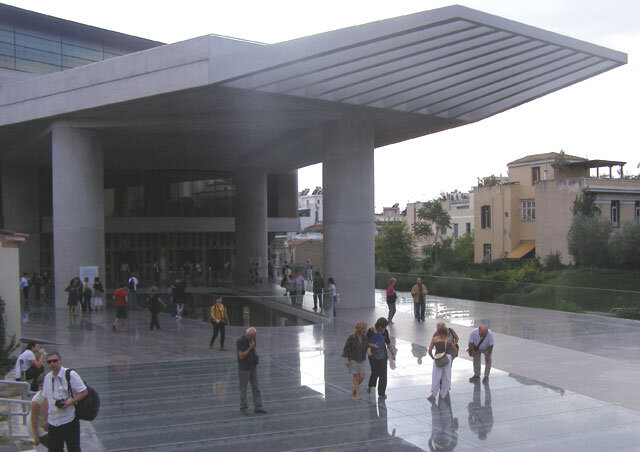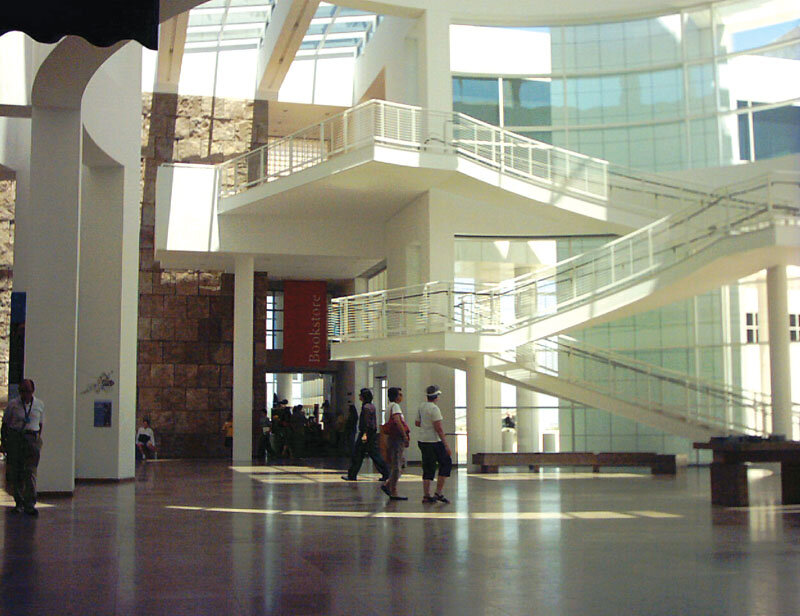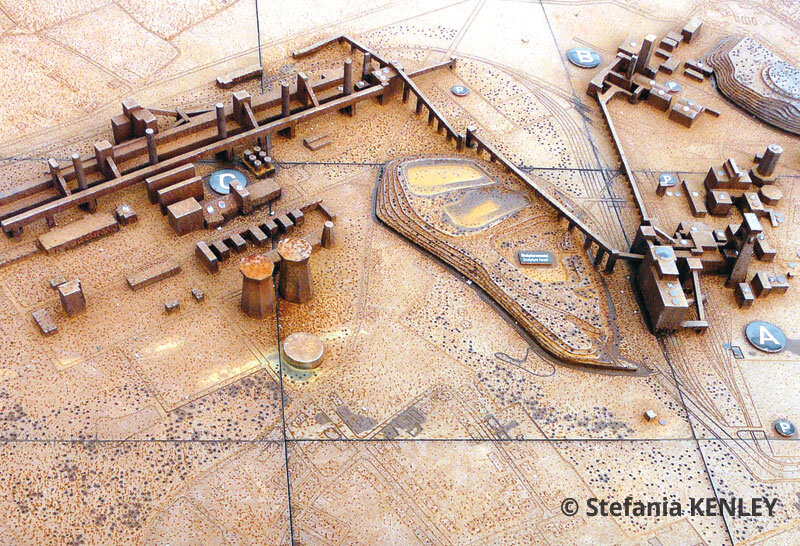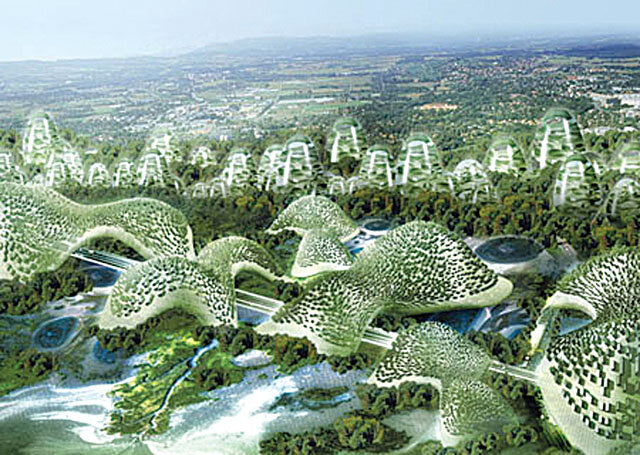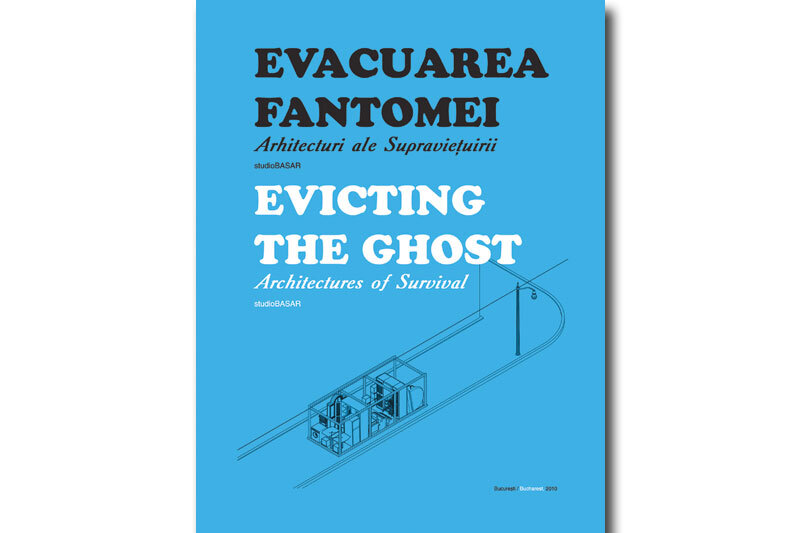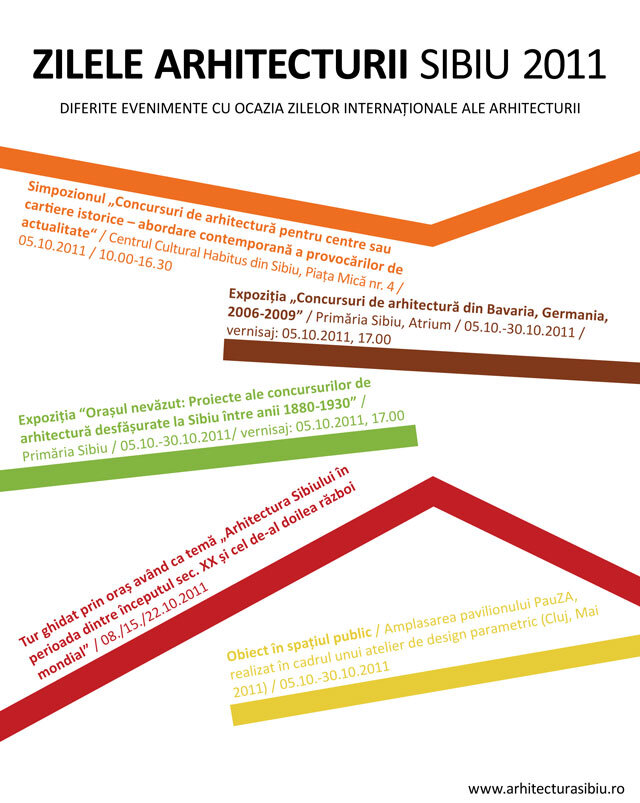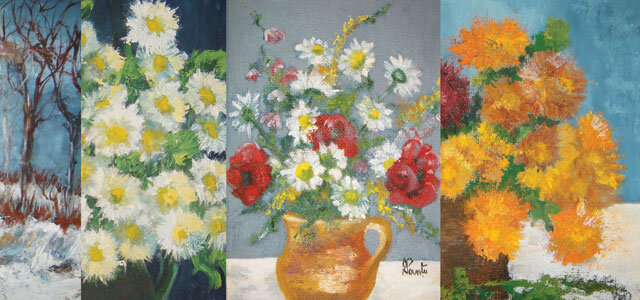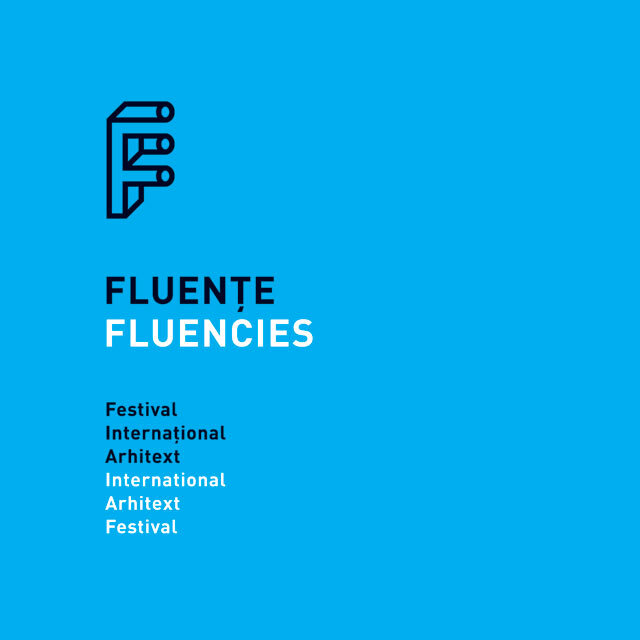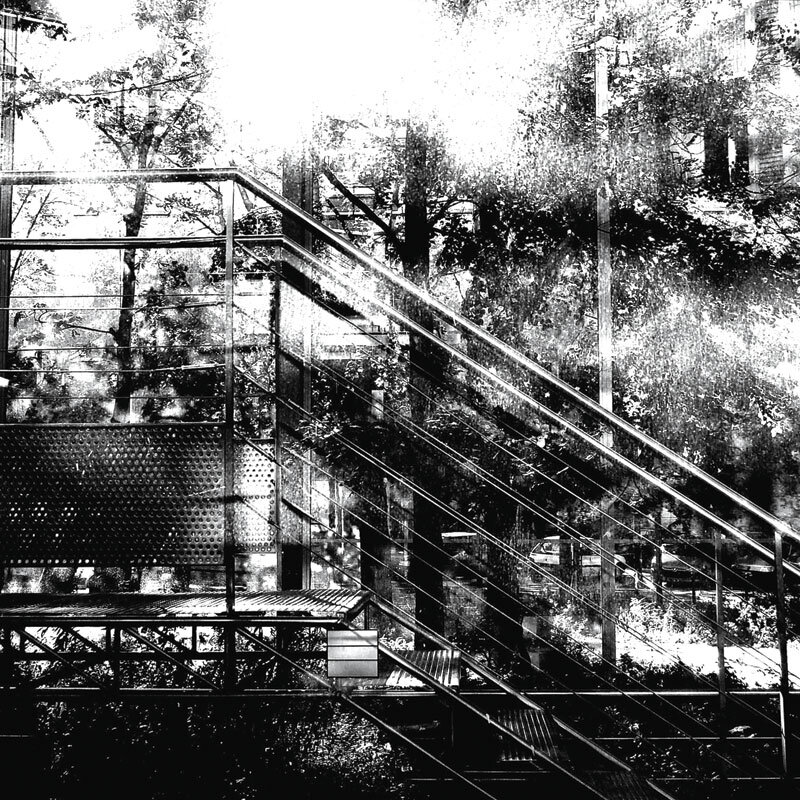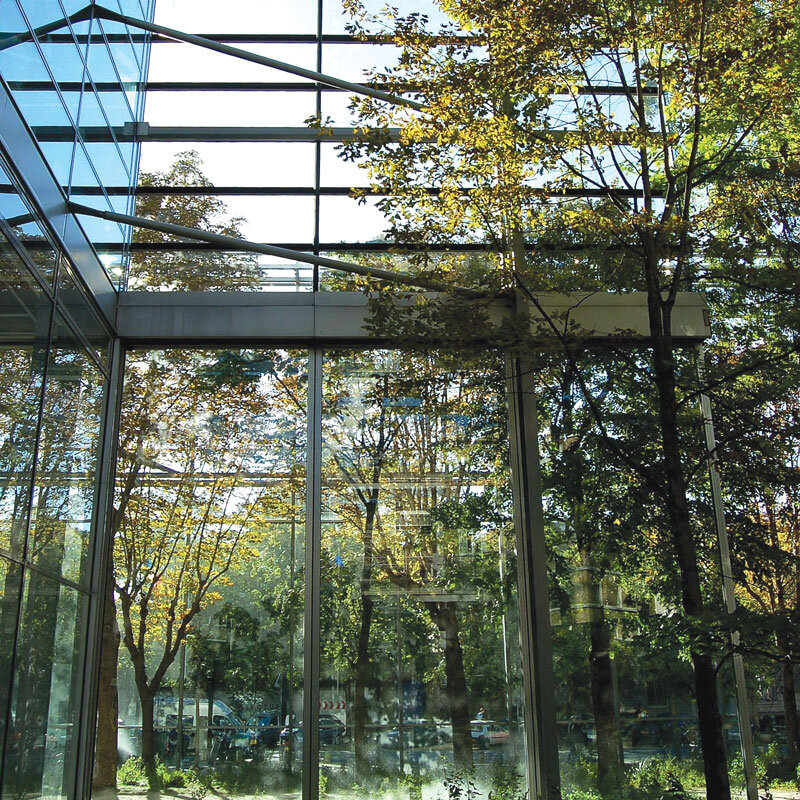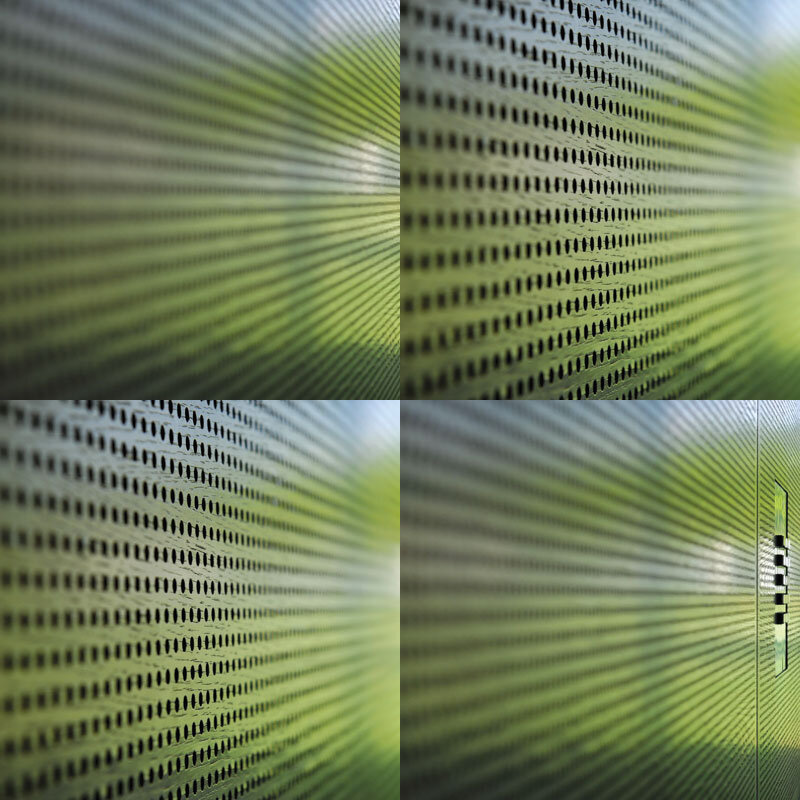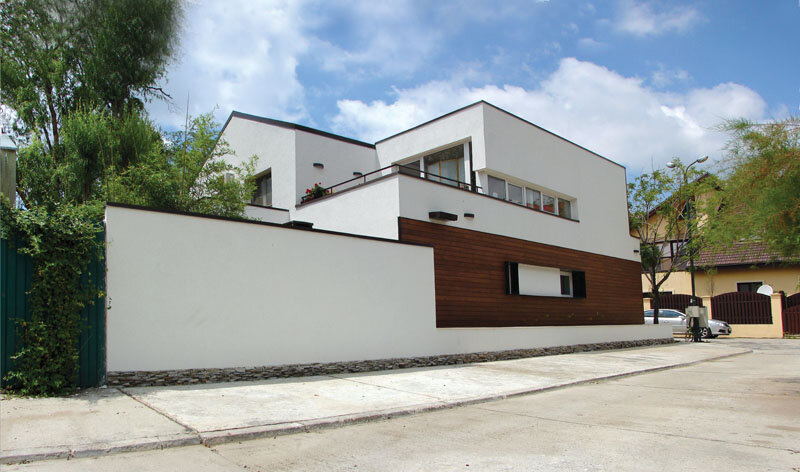
Crystal? What do Moet, Veuve Cliquot and Cartier... Fondation Cartier have in common?

| Bubbles, bubbles, bubbles... in champagne bottles5...This is how architecture sees transparency - an effervescence, an intrinsic quality of contemporary architecture. Beyond the deceptive quality, transparency does not exist. The very term itself refers to the possibility of seeing beyond or to the clear, almost liquid property of the immaterial substance from which the material is made.Transparencies in architecture can 'solve' barriers - cultural, linguistic, stylistic, functional, aesthetic.Focusing on the last category, I note the abundance of 'glass' transparencies of recent decades, which in essence seem to be more like imperceptible mirrors or barriers, not transparencies.In the world of art nouveau or gothic, the transparency of architecture was the quality of the skeleton to break down and subordinate itself to other full planes, until it was visually completely through. To see beyond a massiveness proper to a stable tectonics is, in essence, the exact opposite of architecture. A construction devoid of structural weight, made of playing cards, has the attribute of transparency through the quality of giving free rein to perception, which stops in other planes beyond the constructed limits. Jean Nouvel, from the beginning of his career to the present day, remains devoted to rigorous, transparent surfaces, relying on the dematerialization of the boundaries between interior and exterior. Fondation Cartier is a succession of transparent planes in which projections overlap and the green surroundings are brought closer, multiplied by reflection, in a gesture whereby the material of the façade is no longer an imperceptible limit but, on the contrary, a 'meeting place' for images. |
| Read the full text in issue 4 / 2011 of Arhitectura magazine. |
| 1 Crystal - champagne produced by Louis Roederer, originally for Tsar Alexander II of Russia. Crystal is the world's first cuvee champagne, aimed at elite consumers; marketed since 1945 - source: www.crystalchampagne.net. 2Moët& Chandon - company founded in 1743 by Claude Moët; produces around 26,000,000 bottles of champagne annually. 3 Veuve Clicquot Ponsardin - a champagne house located in Reims, France, and a premium brand; founded in 1772 by Philippe Clicquot-Muiron; The 1811 "vintage comet" edition - Veuve Clicquot, from 1811, is considered to be the first modern champagne, due to the pioneering manufacturing technique applied (méthode champenoise-remuage) (source: http://www.veuve-clicquot.com/accesare:05/09/2011). 4FondationCartier pour l'Art Contemporain - Jean Nouvel, Emanuel Cattani et Associés (1995) - 261 boulevard Raspail, 75014 Paris, France 5 145 bottles of champagne, some of them produced by Veuve Clicquot, dating from the first half of the 1800s, were discovered in a shipwreck in the Baltic Sea in July 2010. "Three of the bottles found last summer were opened on November 16 and confirmed as belonging to the Veuve Clicquot brand: the brand was clearly inscribed on the inside of the cork. The intense yellow color, the exquisite lemon and floral accents and the length of the taste sensation are the main characteristics of this champagne which has not lost its effervescence. It is intact after almost two centuries, as if it had traveled in a time machine. The Baltic route was often used for shipments to Russia, shipments that ensured the early commercial success of the producer, founded in 1772. The brand logo discovered at Marienhamn, in the Åland Islands, also features a comet added by Madame Clicquot in homage to the comet that had streaked across the skies of Champagne in 1811, the year of an unprecedented harvest. This historic discovery confirms Madame Clicquot's motto: 'One quality, the best'." - Source: http://www.visitaland.com/en/facts/champagne; accessed: 05/09/2011 |
| Bubbles, bubbles.... in the champagne bottles5....This is how architecture also sees transparency: as a kind of effervescence, an intrinsic quality of contemporary architecture. Beyond its deceptiveness, transparency does not exist. The very term implies the possibility to see through or the clear, almost liquid quality of the immaterial substance of which the material is made.Transparencies in architecture may overcome many barriers: cultural, linguistic, stylistic, functional, aesthetic.If I dwell on the last category, I have to notice the abundance of the last decades' "glass transparencies", which essentially tend to suggest mirrors or imperceptible barriers rather than transparencies.In the Art Nouveau or Gothic worlds, architectural transparency was the quality of the skeleton of decomposing itself and becoming subordinate to other full plans, until total visual crossing. To see through, beyond the massiveness characterizing a stable tectonics is essentially the very opposite of architecture. A building lacking structural weight, a building made of game cards, is transparent because of its quality of giving free rein to perception, which stops to linger on other planes, beyond the built limits. Jean Nouvel, from the beginning of his career and until present, has remained indebted to rigorous, transparent surfaces, relying on the dematerialization of the limits separating the interior from the exterior. Fondation Cartier is a succession of transparent plans, where projections overlap and the green proximal space is drawn nearer, multiplied by reflection, in a gesture converting the material of the façade from an imperceptible limit into its opposite, a "place" of meeting for the images. |
| Read the full text in the print magazine. |
| 1 Crystal - Champagne initially produced by Louis Roederer for Tsar Alexander II of Russia. Crystal is the first cuvee champagne in the world, targeted at elite consumers and marketed since 1945 - source: www.crystalchampagne.net. 2Moët& Chandon - company established in 1743 by Claude Moët; produces annually approximately 26,000,000 bottles of champagne. 3 Veuve Clicquot Ponsardin - a champagne house from Reims, France, and a premium brand; founded in 1772 by Philippe Clicquot-Muiron; the 1811 edition "comet vintage" - Veuve Clicquot is considered to be the first modern champagne due to its pioneering manufacturing technique applied (méthode champenoise-remuage) - source: http://www.veuve-clicquot.com/accessed:05/09/2011; 4FondationCartier pour l'Art Contemporain - Jean Nouvel, Emanuel Cattani et Associés (1995) - 261 boulevard Raspail, 75014 Paris, France 5145bottles of champagne, part of which were produced by Veuve Clicquot, dating from the first half of the 1800s, were discovered in a sunken wreck in the Baltic Sea, in July 2010. "Three of the bottles found last summer were opened on November 16 and confirmed to be Veuve Clicquot: the brand is clearly legible on the inside of the cork. A deep yellow color, refined hints of flowers and citrus and length in taste are the striking characteristics of this still sparkling champagne. It is intact yet almost two centuries old, as if it had traveled in a time machine. The Baltic route was often used for shipments to Russia, which sealed the early commercial successes of the champagne House, founded in 1772. The branding discovered in Marienhamn, Aland Islands, includes a comet which was added to her logo by Madame Clicquot, to pay tribute to the one that went through the skies of Champagne in 1811, a year of a superlative harvest. This historical discovery confirms Madame Clicquot's motto: "One quality only, the finest.""" source: |
photo: Alexandru CRIȘAN





